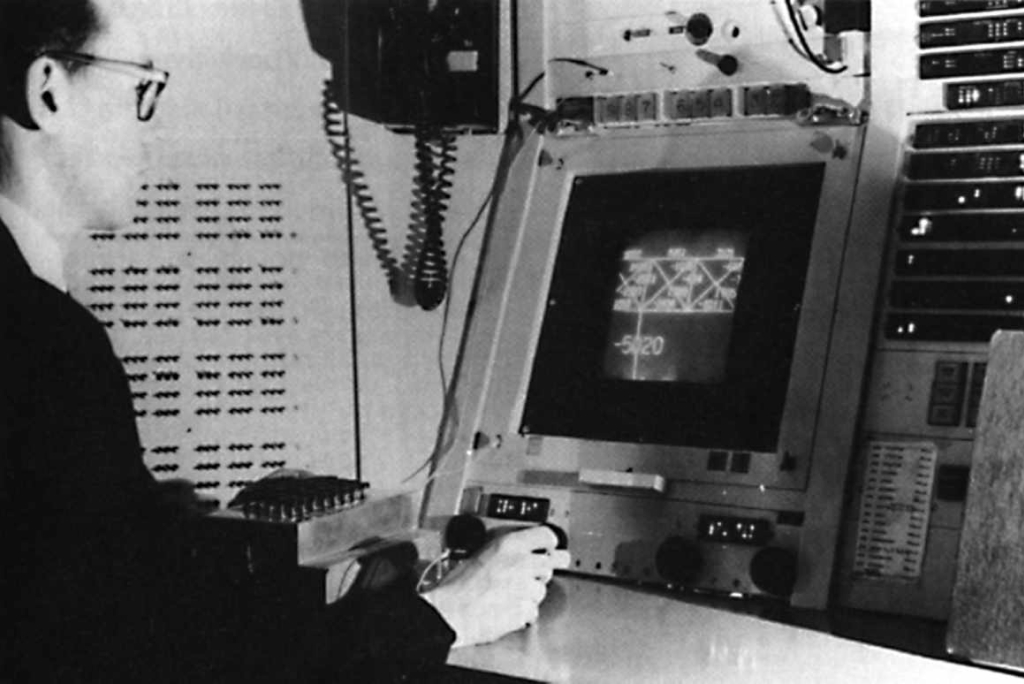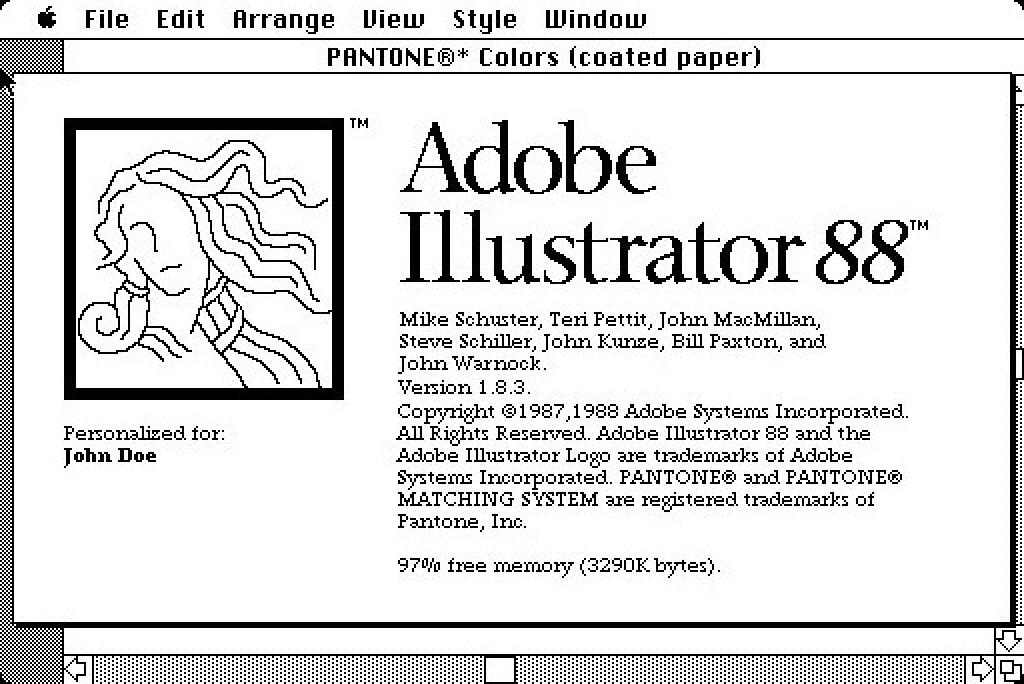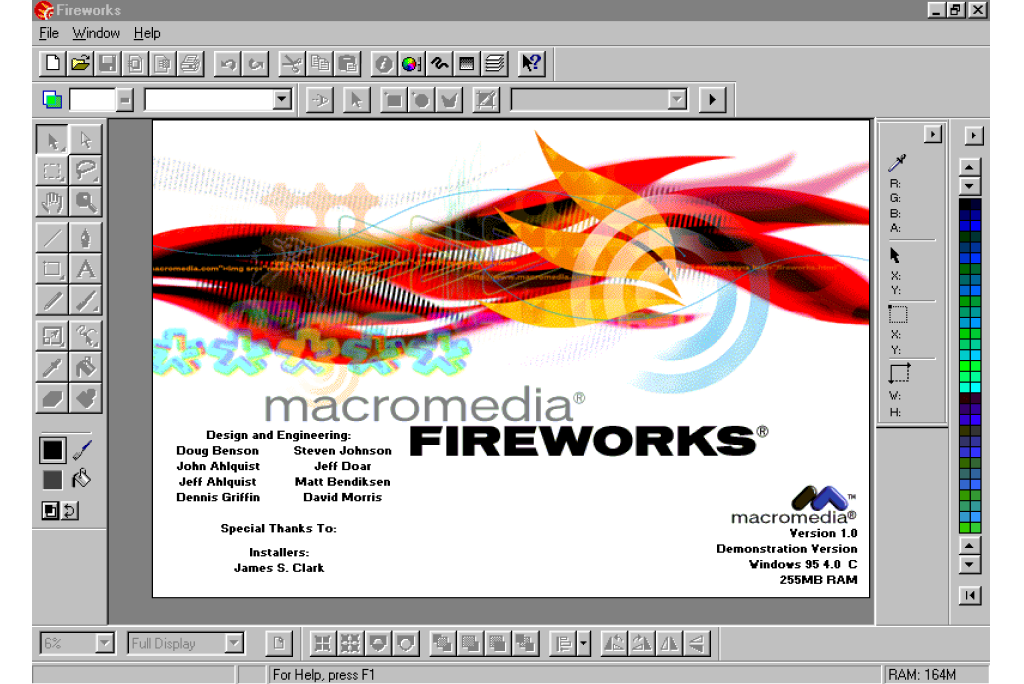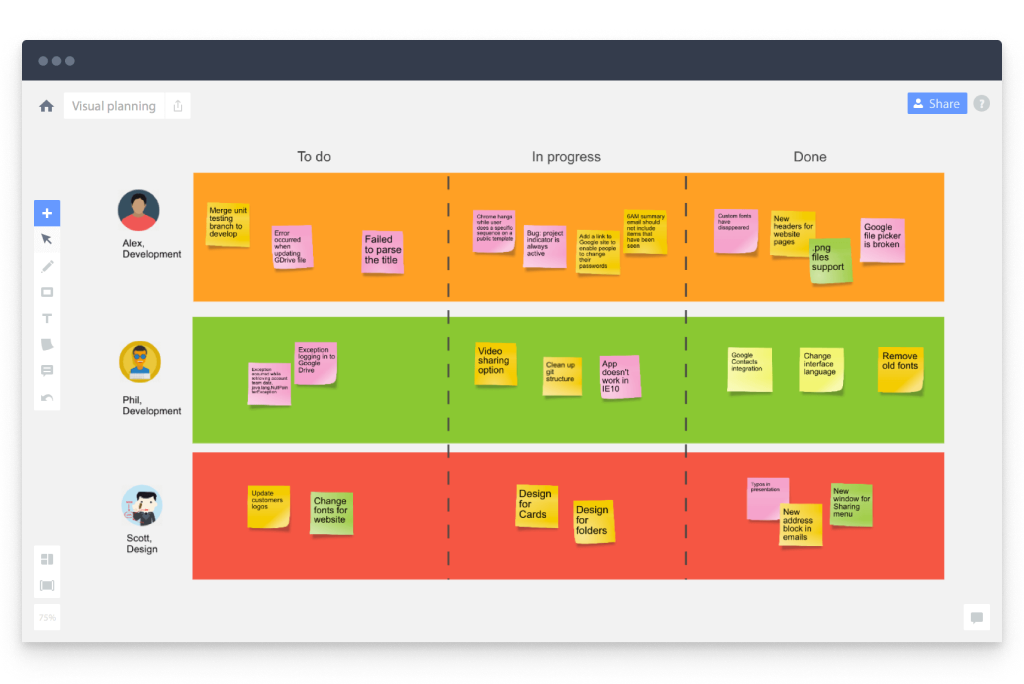-
• Sketchpad
As part of his Ph.D. thesis at MIT, Ivan Sutherland, developed the earliest instance of an infinite canvas in software, using a light pen on a CRT connected to a Lincoln TX-2 computer.
It was the first interactive graphics program, using the first object-oriented software system which was implemented in the first non-procedural programming language.

-
• Post It note
Dr. Spencer Silver, while attempting to develop a super-strong adhesive, accidentally created a “low-tack”, reusable, pressure-sensitive adhesive. He tried to find an application for the adhesive for years. Then, his colleague Art Fry used the adhesive to anchor a bookmark in his hymn book. The pale yellow color was selected by chance. After many iterations, the product was finally sold as “Post-Its” in 1979.

-
• Adobe Illustrator
Adobe Illustrator was originally developed from Adobe’s in-house font development software and the PostScript file format. It has been a dominant player in the market of vector-based graphics design programs.

-
• Macromedia Fireworks
Combining both raster and vector editing, Macromedia’s Fireworks was a graphics tool made specifically for web design. With support for interactivity, asset export, and more, it is seen as a predecessor to modern design tools like Sketch and Figma.
In 2005, Adobe purchased Macromedia and Fireworks was renamed Adobe Fireworks. Seven years later, Adobe announced that it would discontinue its development.

-
• The term “Infinite Canvas” is coined
Reinventing Comics is the thematic sequel to Scott McCloud’s Understanding Comics. The book is divided into twelve potential revolutions in how people create, read, and perceive comics.
The last of these revolutions is what McCloud called “The Infinite Canvas.” This concept breaks from the sequential flow of comics by embracing computing technology. Instead of the computer monitor representing a page, it would represent a window onto an endless canvas that continues in all directions. Comics could flow non-linearly in arbitrary directions.

-
• Sketch 1.0
The first version of Sketch was released to the public in late 2010 by the Dutch company Bohemian Coding (later renamed Sketch B.V.). It started as a vector image editing tool but soon found traction as a design tool. Adobe’s abandonment of Fireworks in 2012 and Sketch’s design-focused features like Symbols further cemented it as a favorite among design teams.

-
• RealtimeBoard 2.0 (Miro)
RealtimeBoard started in 2011 to solve the needs of a distributed design agency. By 2015, it relaunched with a new user experience and new stack (HTML5 instead of flash) to much praise. The product accumulated momentum in tandem with the growth of remote collaboration.
In 2019, the company was renamed Miro as part of a wider rebrand. Miro is now considered one of the leading players in the remote collaboration software space.

-
• Adobe acquires Figma
Figma began in 2012 as a browser-based photo editing tool harnessing the newly-released WebGL APIs. By 2016, Figma had launched to the public as a browser-based interface tool much like Sketch.
Given it was built in the cloud, it sidestepped the issue of file version control and enabled cross-platform real-time collaboration.
Over the years, Figma became one of the primary tools used by digital designers.
In 2022, Adobe announced its intention to acquire Figma for $20 billion.
